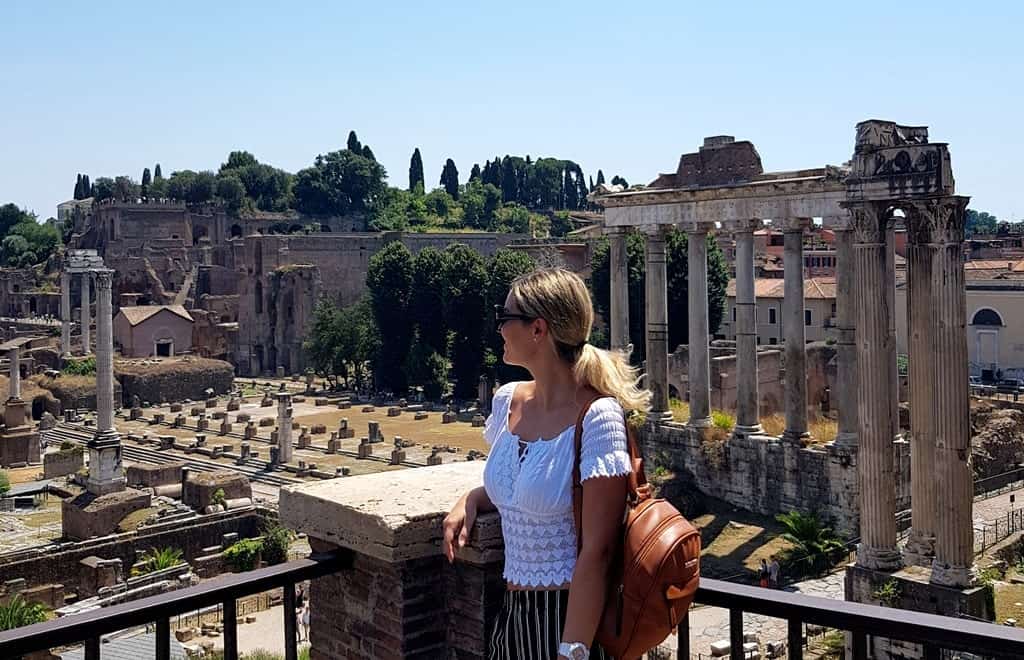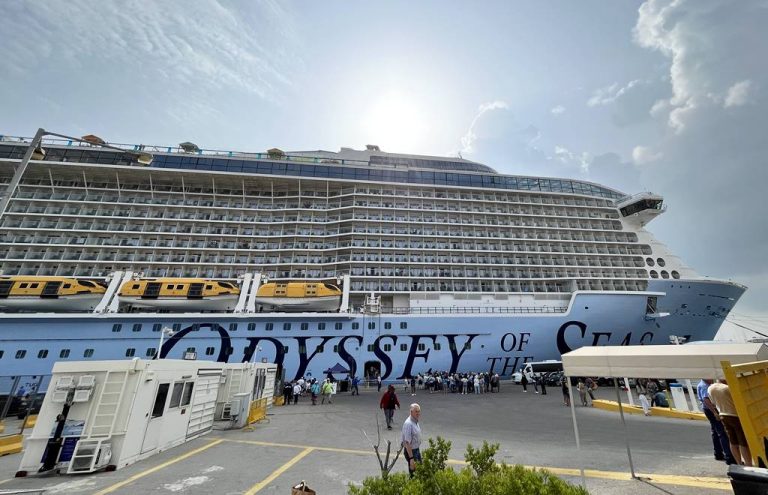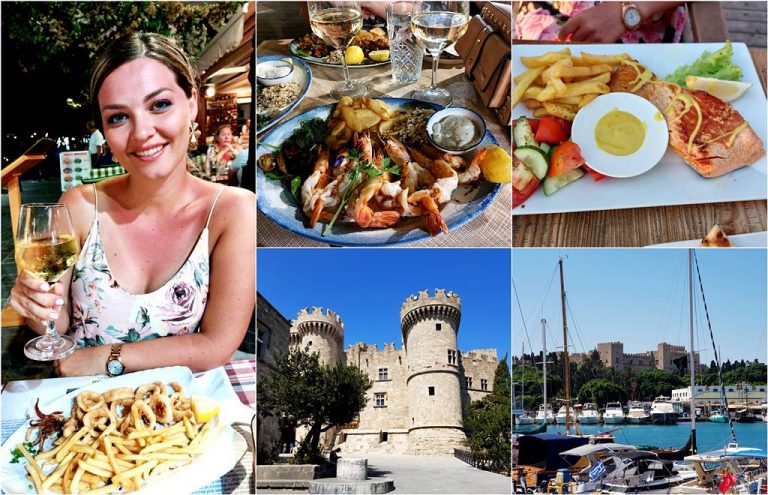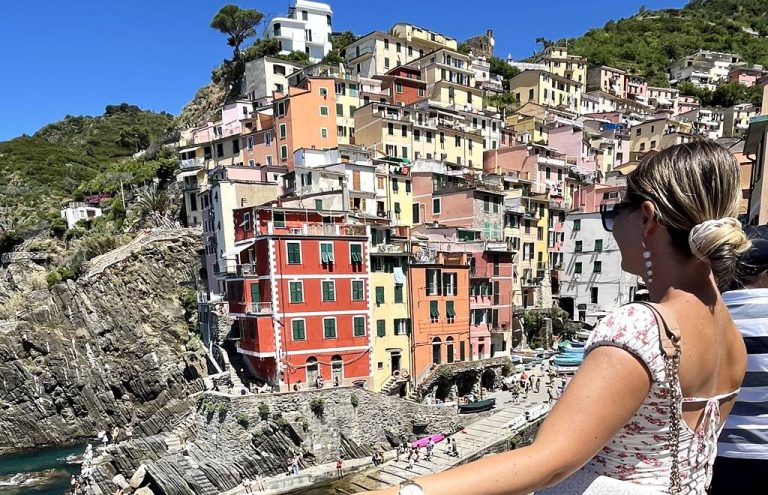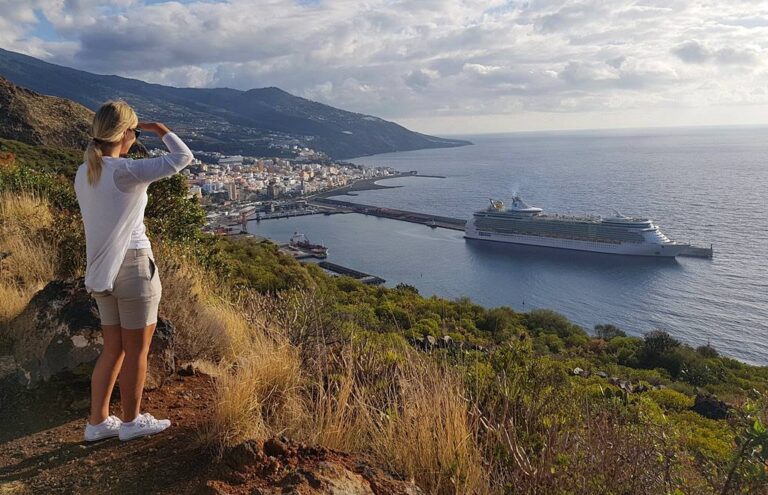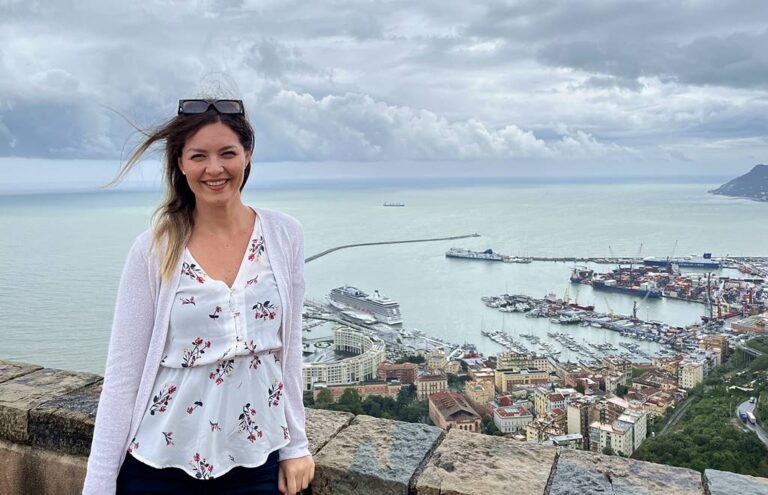How to Get from Civitavecchia to Rome + Self-Guided Walking Tour (Cruise-Friendly)
Some links in this post are affiliate links. If you book through them, I may earn a small commission at no extra cost to you. Thanks for supporting my work!
As an Amazon Associate, I earn from qualifying purchases. Read my full disclosure here.
Visiting Rome in just one day might sound impossible, as the Eternal City truly deserves a week or more.
But if your cruise ship docks in Civitavecchia cruise port, you can still see many of the highlights with a quick trip to Rome and a DIY self-guided walking tour.
I’ve visited Rome several times, including once on a cruise, when I arrived at Civitavecchia and took the train into the city.
With only a few hours ashore, I managed to explore Rome’s top landmarks on my own and get back to the ship on time.
In this guide, I’ll show you:
- The best ways to get from Civitavecchia to Rome
- A half-day walking tour that covers the must-see sights
- Useful tips for making the most of your short visit as a cruiser
How to Get from Civitavecchia to Rome
Getting from Civitavecchia cruise port to Rome is easier than many cruisers think.
The port is about 80 km (50 miles) from the Eternal City, and you can choose between train, bus, private transfer, or guided excursions depending on your time, budget, and comfort level.
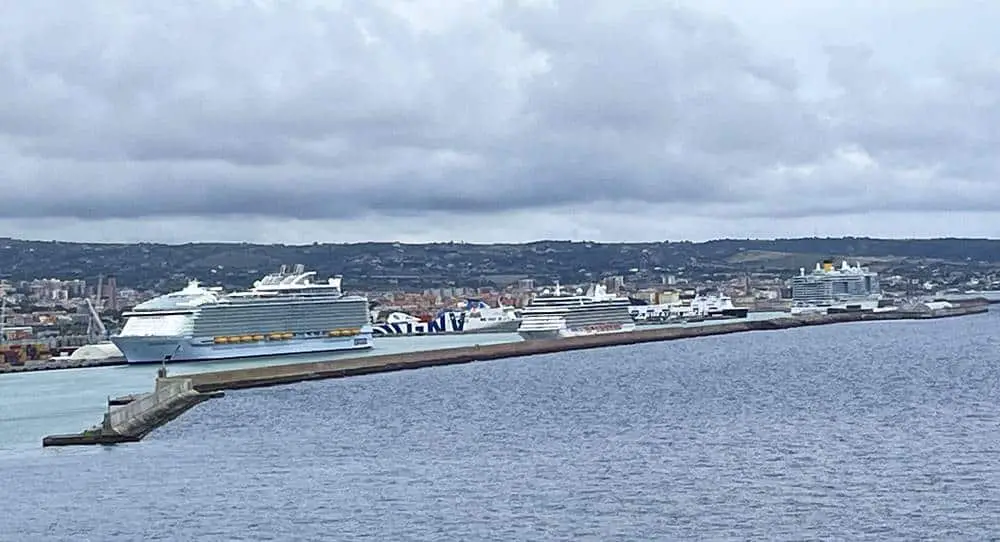
🚆 By Train (Fastest & Most Affordable)
The train is the cheapest and often the fastest way to get from Civitavecchia to Rome.
Civitavecchia is a very large commercial port, so walking from your ship to the train station is not really an option (it takes 30-45 minutes).
The best ways to reach Civitavecchia train station (Stazione Civitavecchia) are:
- Civitavecchia Port Link shuttle bus (€6 one way, 10 minutes’ ride) – drops you right outside the station.
- Taxi – I paid around €10 per person when sharing, though I’ve heard it can sometimes be less. It’s a quick and convenient option, especially for groups.
Another option is the free port shuttle to Largo della Pace info point at the port entrance, where you can either walk about 25 minutes or catch a local bus to the station, but this is time-consuming, so I’d skip it if you only have a day in Rome.
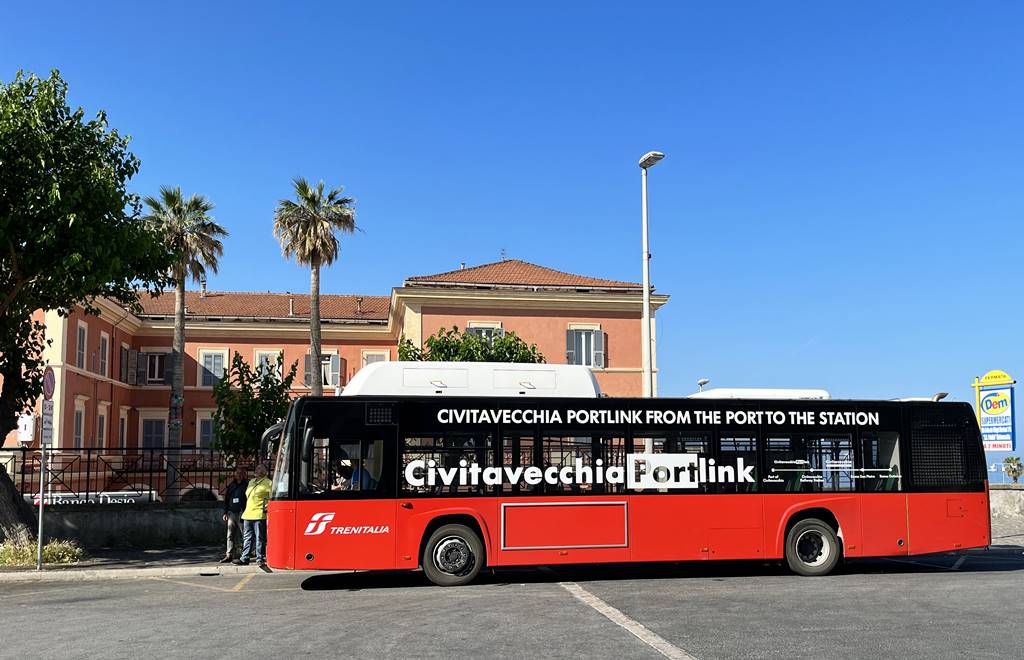
Trains from Civitavecchia to Rome depart every 20–30 minutes (or even more frequently) and take 45 minutes to 1h20 depending on the service and your Rome stop.
Tickets start at €4.60 and can be bought online (Trenitalia.com), from machines, or at the station ticket office. Always remember to validate regional tickets before boarding.
The main stations in Rome are:
- San Pietro – for the Vatican and Castel Sant’Angelo
- Trastevere – for Trastevere, Campo de’ Fiori, Piazza Navona, Pantheon
- Ostiense – for the Colosseum and Roman Forum
- Termini – the main train station in Rome
💡 Cruise Tip: If you miss your scheduled train, don’t panic. Tickets allow you to change the departure time (as long as they haven’t been validated yet). This flexibility is especially useful for cruise passengers, giving you peace of mind if you’re running late.
🚌 Shuttle Bus to Rome
Some private bus companies, like SIT Bus Shuttle, operate transfers from Civitavecchia port (Largo della Pace) to Roma Termini station.
However, departures are very limited (only a few in the morning and afternoon – check on the official SIT Bus Shuttle website), so this is not a flexible option for cruisers.
- Cost: €12.50 one way / €25 round trip
- Travel time: Around 1h15–1h30, depending on traffic
- Best for: Airport transfers (Fiumicino or Ciampino), where SIT offers more frequent service
👉 For cruise passengers heading into Rome, I wouldn’t recommend relying on the shuttle because of the fixed schedule. The train gives you far more flexibility and frequent departures.
🚖 Taxi & Private Transfer
Booking a private transfer from Civitavecchia to Rome is the most convenient option.
Unlike the train, you don’t have to worry about delays, strikes, or finding your way around stations. Your driver will meet you at the port and take you directly to Rome, and most importantly, guarantee your return to the ship on time.
It’s also the most expensive choice, usually around €150-200 one way, but it can be a good deal if you’re traveling as a group. Just make sure to book with a reliable company and an English-speaking driver.
👉 Check the price with services like Welcome Pickups for reliable, fixed-rate transfers.
💡 Good to know: If you’re flying in or out, both Fiumicino (Leonardo da Vinci Airport) and Ciampino Airport are about 1–1.5 hours from the port. Many transfer companies also offer direct shuttles between the airports and Civitavecchia. This is usually the best option compared to trains or local buses, which take longer and involve changes at Roma Termini.
🚢 Cruise Line Transfers & Excursions
Cruise lines offer transfers and excursions from Civitavecchia to Rome, with the big advantage that the ship will wait for its own buses.
However, cruise lines tend to overcharge for excursions, and you can often find the same (or better) tours at a lower price through reliable platforms like Viator or GetYourGuide. I usually book with them myself, as they offer flexible cancellation, clear reviews, and a wide choice of both guided tours and simple transfers.
👉 Check tours and transfers from Civitavecchia here on Viator or GetYourGuide to compare prices and options for your Rome day trip.
🎥 Prefer watching instead of reading? Here’s my video guide on getting from Civitavecchia to Rome and the best things to do in just one day!
Rome Self-Guided Walking Tour (Half-Day Itinerary for Cruisers)
My itinerary ran from the Colosseum to St. Peter’s Basilica, about 5 km (3 miles) through central Rome.
With a few detours and the extra walks to and from the train stations, it turned into roughly 6-7 km in total.
Since I only had 4 hours, I had to move quickly and plan carefully to fit everything in.
If you have more time in Rome than I did, you can also include a proper visit inside the Colosseum, climb the Spanish Steps, or explore the Vatican Museums.
Although this is a walking itinerary, here’s a quick overview of transport options in Rome that might come in handy if you need to save time or cover longer distances.
🚇 Getting Around Rome (Quick Tips)
Rome’s historic center is very walkable, but sometimes you’ll want public transport to save time.
- Metro (Lines A & B): Fastest way to cover longer distances. A single ticket costs €1.50 and is valid for 100 minutes. The main stops for cruisers are Colosseo (Line B) for the Colosseum and Ottaviano (Line A) for the Vatican and St. Peter’s Basilica.
- Bus 64: Runs between Termini, Piazza Venezia, and the Vatican, with stops close to the Pantheon and Campo de’ Fiori. It’s very popular with tourists, so keep an eye on valuables.
- Tram 8: Connects Trastevere with Piazza Venezia, useful if you want to explore Trastevere or get back toward the city center.
- Taxis & Ride Apps – Official taxis are white with a “TAXI” sign; always make sure the meter is on. Ride apps like Free Now also work in Rome.
👉 For a short cruise stop, I recommend mostly walking + metro. You can check the latest timetables here: ATAC (Rome Metro, Bus & Tram)
🛑 Stop 1: Colosseum & Roman Forum
Upon getting off the train at Roma Termini, this is where the walking tour begins. From Termini, you can either:
- Take Metro Line B for two stops and get off at Colosseo, or
- Walk about 25 minutes to reach the Colosseum.
The Colosseum, built between 70–80 AD under Emperors Vespasian and Titus, is the largest ancient amphitheater in the world.
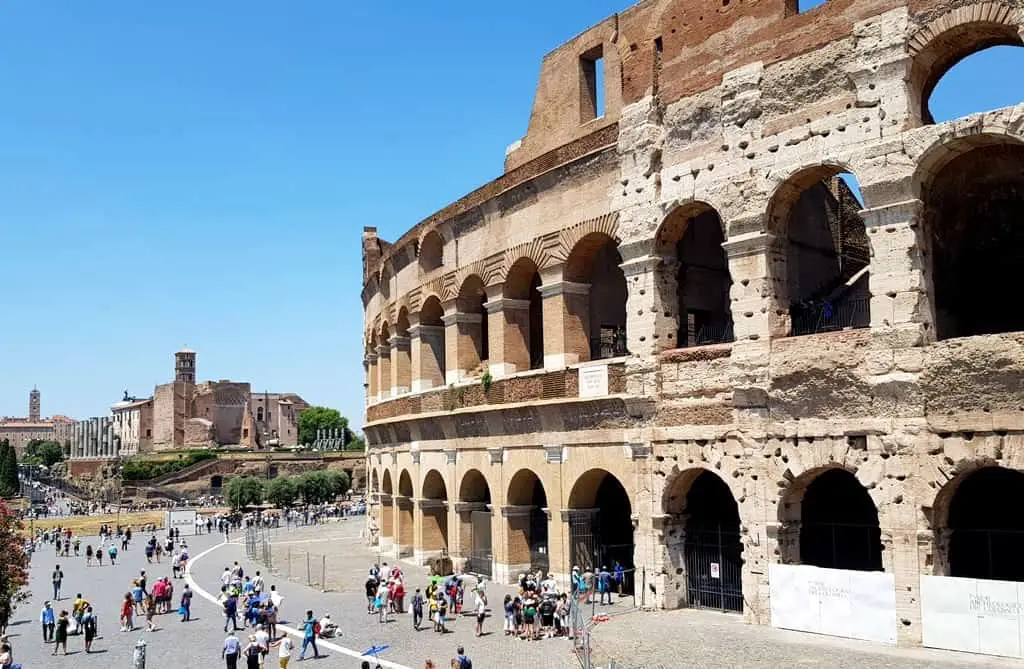
Once hosting gladiatorial contests, animal hunts, and public spectacles, it could hold up to 70,000 spectators; a true engineering marvel of Ancient Rome.
If you plan to go inside, allow at least 2 hours and book skip-the-line tickets or a guided tour in advance, as lines can be hours long.
Today, the square around the Colosseum is always buzzing with tourists.
On my walk, I only had time to admire it from outside, which is still breathtaking.
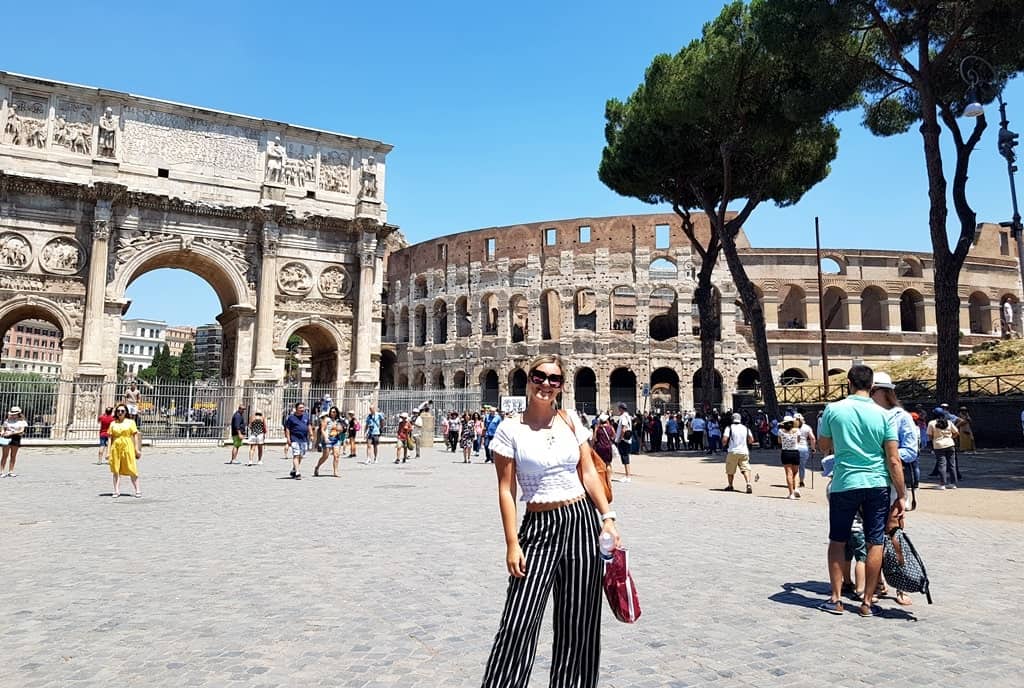
After about 15 minutes circling the exterior, I continued toward the Roman Forum, just a 5-minute walk away, once the heart of political and social life in ancient Rome.
From the Colosseum, I walked along Via dei Fori Imperiali, which runs right past the Roman Forum.
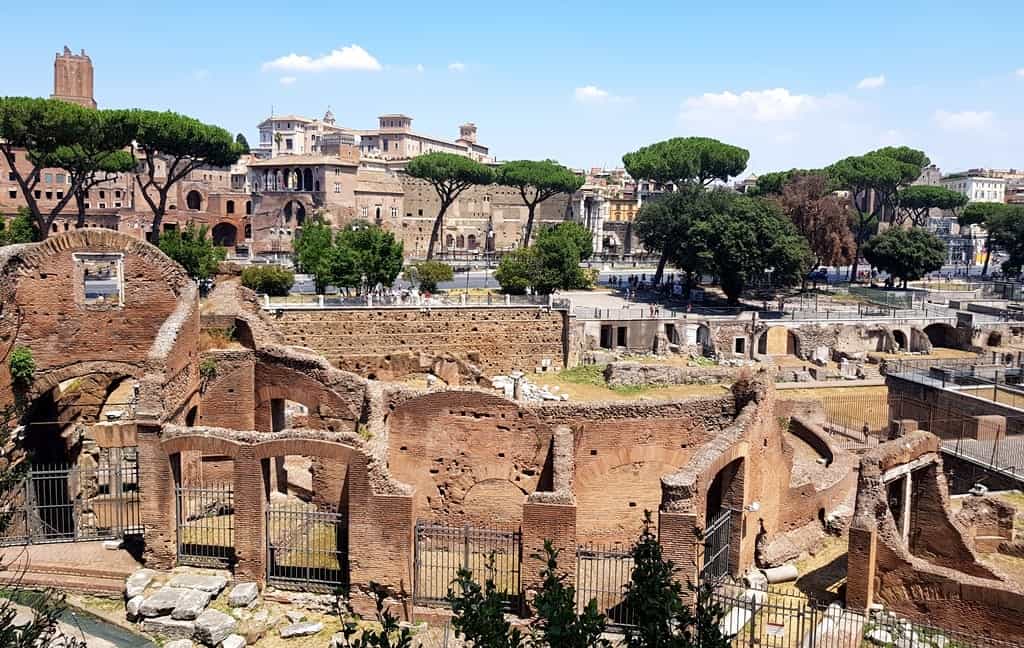
This was once the heart of Ancient Rome, home to temples, basilicas, the Senate house, and the spot where public speeches and triumphal parades took place.
Normally, you’d need at least half a day to explore inside, but with limited time, I admired the ruins from the street.
🎟️ Planning to visit the Forum?
Skip the line and book your tickets or a guided tour in advance!
The path stretches about 1 km (0.6 miles), linking the Colosseum, Forum, and my next stop — Campidoglio.
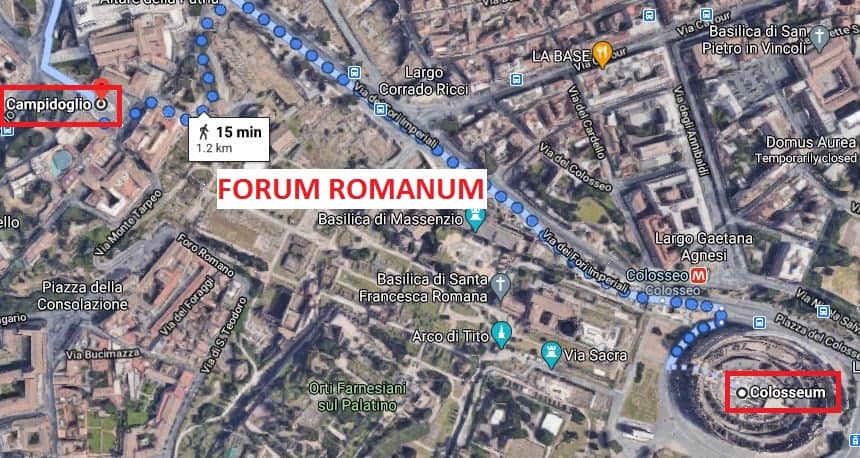
🛑 Stop 2: Campidoglio (Capitoline Hill)
Campidoglio Square, designed by Michelangelo in the 16th century, sits atop Capitoline Hill and was the first modern square in Rome.
At its center stands a bronze replica of Marcus Aurelius on horseback, while the original is kept in the Palazzo dei Conservatori, part of the Capitoline Museums.
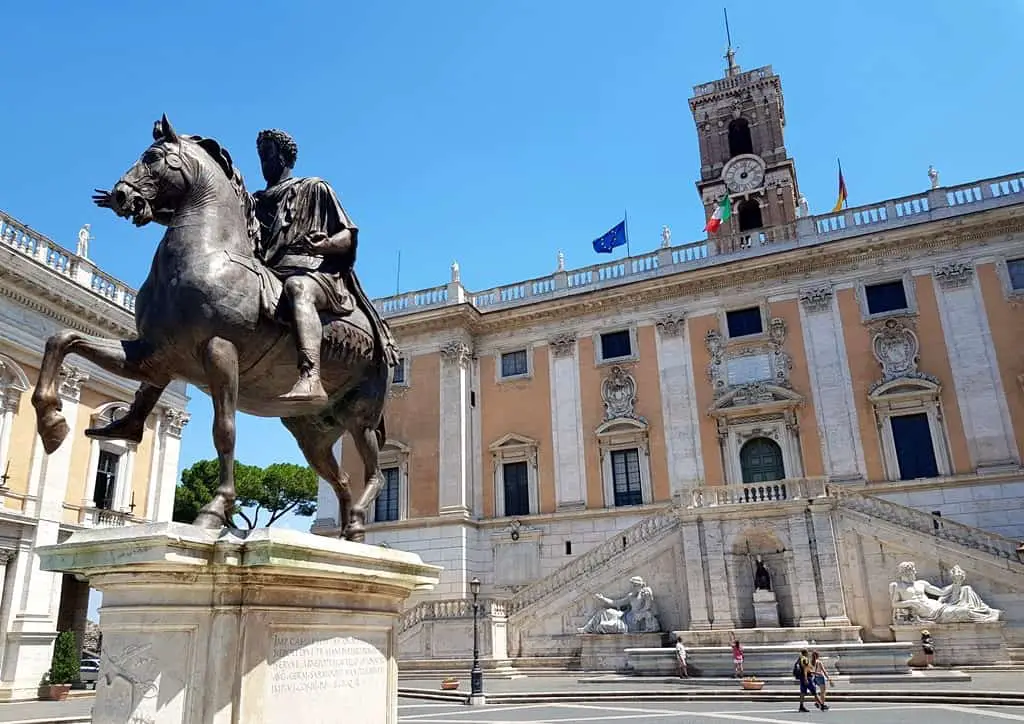
The square is framed by Renaissance palaces, including the Senatorial Palace (Rome’s Town Hall), known for its bell tower and fountain of the Goddess Roma.
From here, you also get a stunning view over the Roman Forum. It’s just a short uphill walk to reach this spot, and well worth the stop.
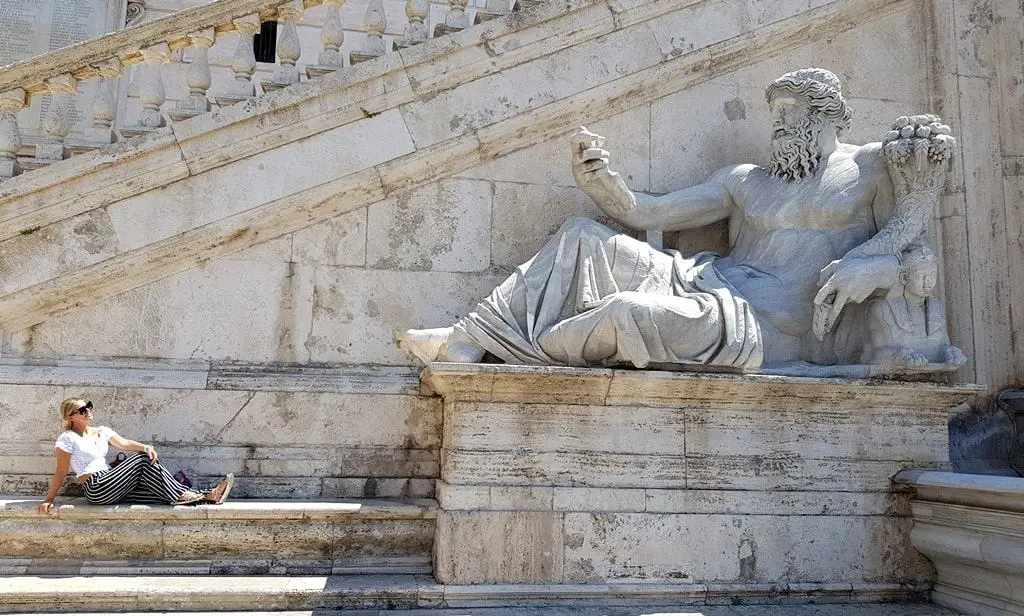

🛑 Stop 3: Piazza Venezia, Via del Corso & Trevi Fountain
From Campidoglio Square, a short walk downhill brings you to Piazza Venezia, one of the busiest squares in Rome.
Dominating the square is the enormous white marble Vittoriano monument, built in honor of King Victor Emmanuel II, the first king of unified Italy.
The monument also houses the Tomb of the Unknown Soldier, guarded day and night as a symbol of national pride.
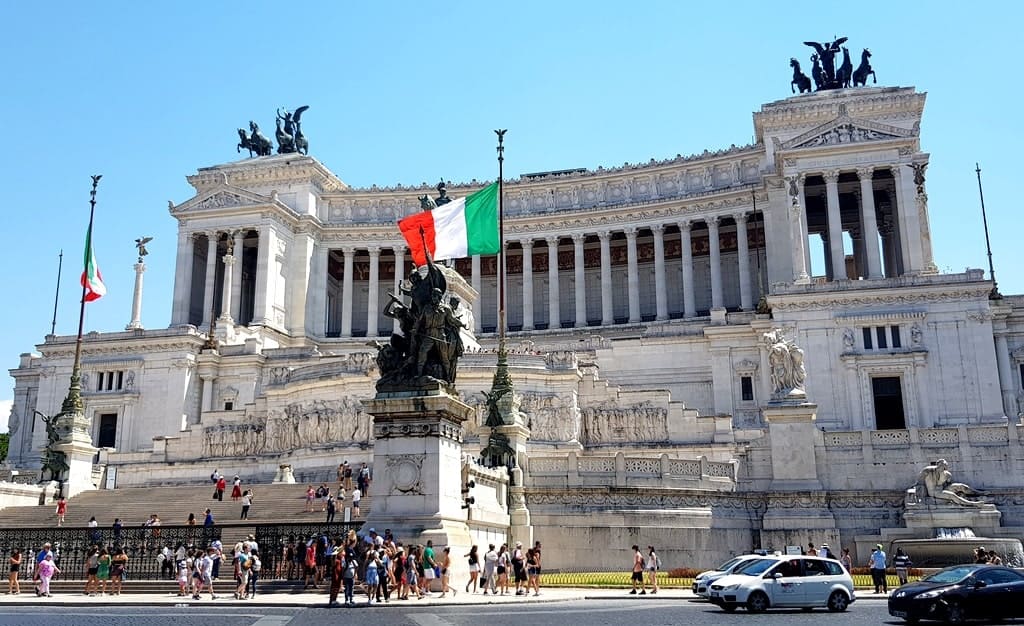
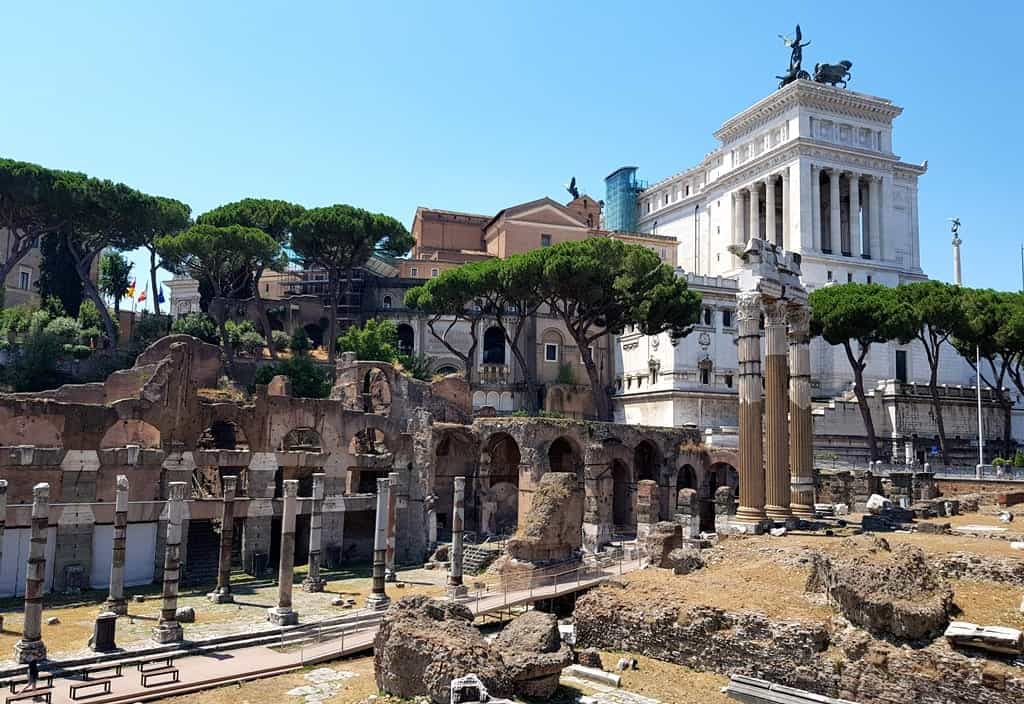
From Piazza Venezia begins Via del Corso, a lively avenue stretching straight through the heart of Rome.
This bustling street is lined with international shops, boutiques, cafés, and gelaterias, making it a favorite for both sightseeing and shopping.
As you stroll along, you’ll be walking the same path once used for papal processions and grand parades.
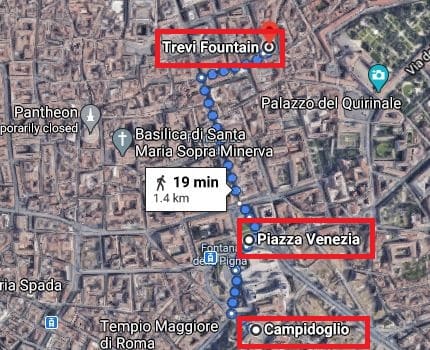
A short detour from Via del Corso leads you to the Trevi Fountain, one of the most famous landmarks in the world.
Built at the endpoint of an ancient aqueduct, on the site where three roads once met, hence the name “tri viae” or “Three Roads Fountain”, this 18th-century masterpiece of Baroque art features Oceanus, the god of the sea, at its center, surrounded by dramatic sculptures and cascading water.
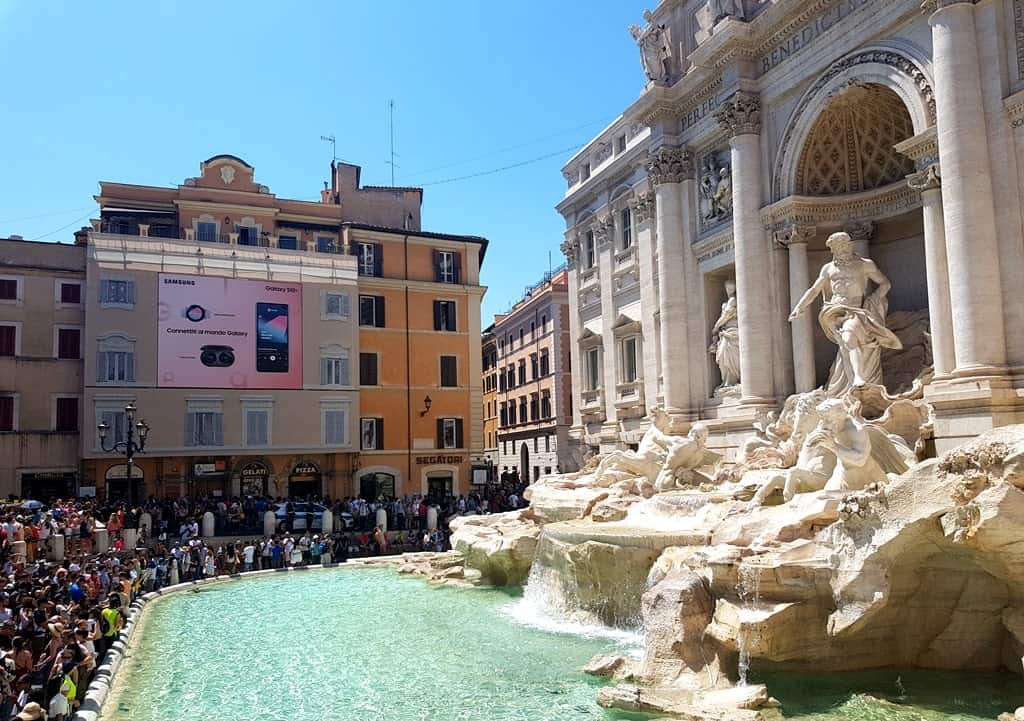
Legend says that tossing a coin over your shoulder into the fountain ensures your return to Rome, a ritual practiced by millions of visitors each year.
👉 If you want to hear fascinating stories and hidden details about the Trevi Fountain, you can book a guided tour here
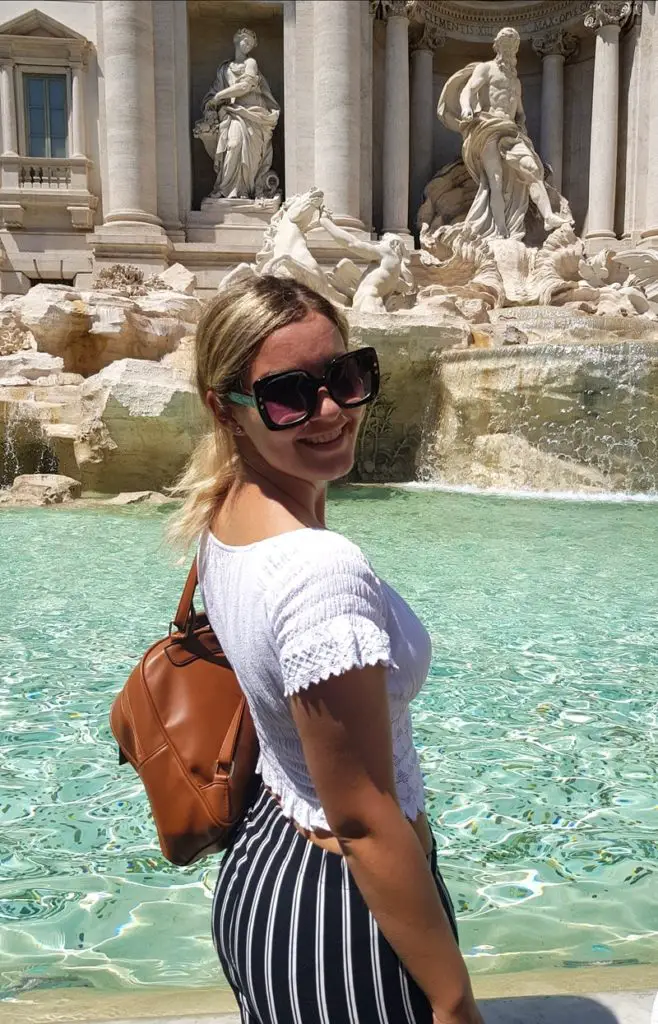
🛑 Stop 4: Pantheon
From the Trevi Fountain, it’s only about a 10-minute walk (650–700 meters) to the Pantheon.
This ancient Roman temple, later converted into a Catholic basilica, is one of the city’s most extraordinary landmarks.
Built under Emperor Hadrian in 125 AD, it still boasts the largest unreinforced concrete dome in the world, with its famous oculus that lets in natural light.
Inside, you’ll find the tombs of Raphael, King Vittorio Emanuele II, and King Umberto I.
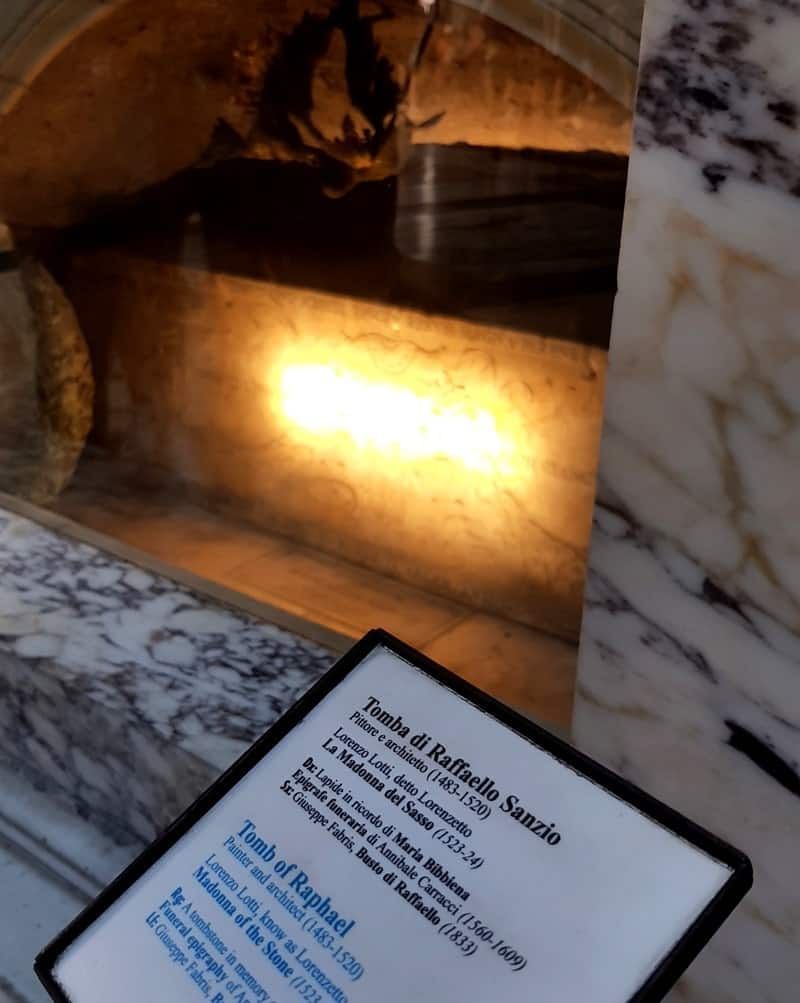
Entry now requires a small fee (€5), and audio guides are available.
👉 And, if you’d like to explore the Pantheon with expert insights, you can book a guided tour here
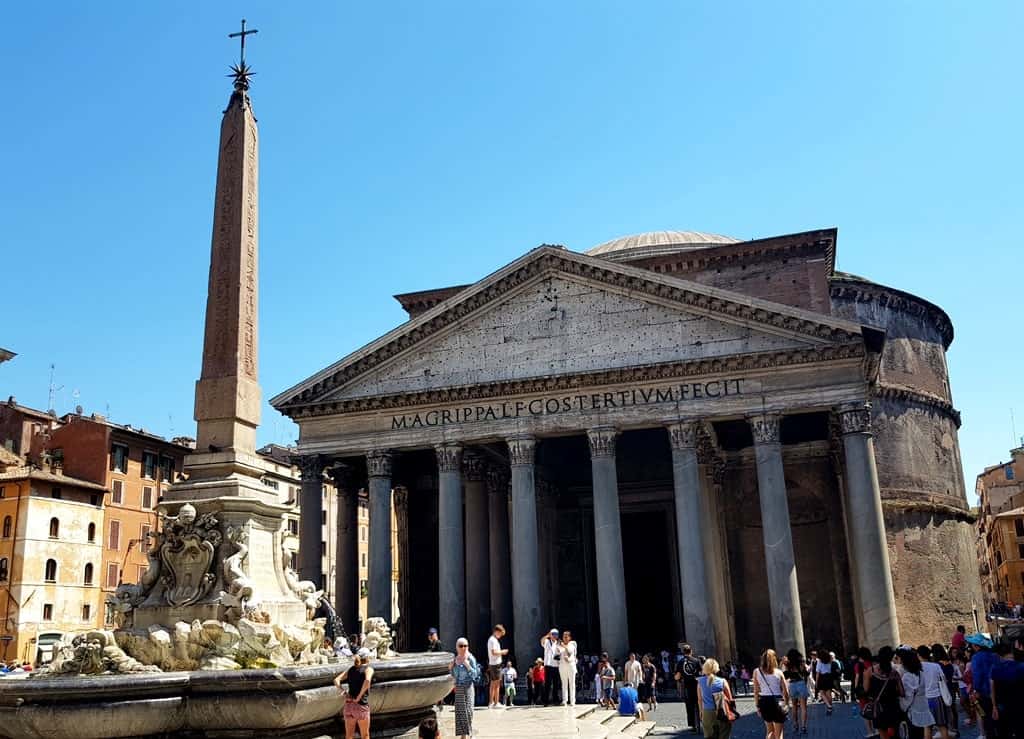
🗺️ Optional Detour: Spanish Steps
I skipped the Spanish Steps this time because it would have added about 10-15 minutes each way, and I’d visited before.
But if you still have the energy, the steps are a major Roman landmark and worth the climb for views and atmosphere.
🛑 Stop 5: Piazza Navona
Only 400 meters further lies Piazza Navona, one of the most stunning squares in Rome.
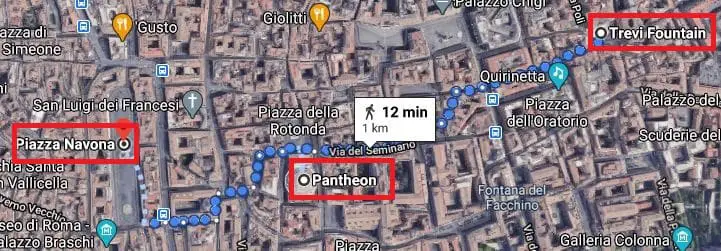
Once the Stadium of Domitian, today it’s a Baroque masterpiece, filled with cafés, street artists, and three ornate fountains.
The most famous is Bernini’s Fountain of the Four Rivers (1651), crowned with an obelisk and symbolizing the Danube, Nile, Ganges, and Rio de la Plata.
Opposite stands the grand Sant’Agnese in Agone church, free to visit and richly decorated inside.
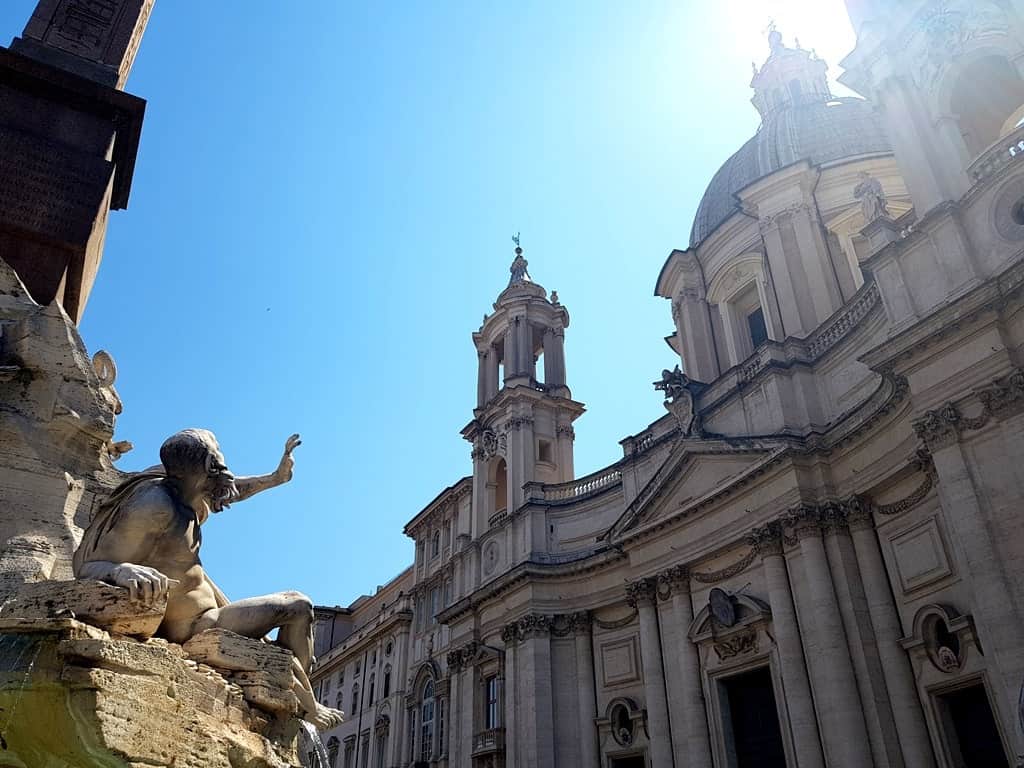
The square is especially magical at sunset, perfect for a drink or gelato at one of the surrounding terraces.
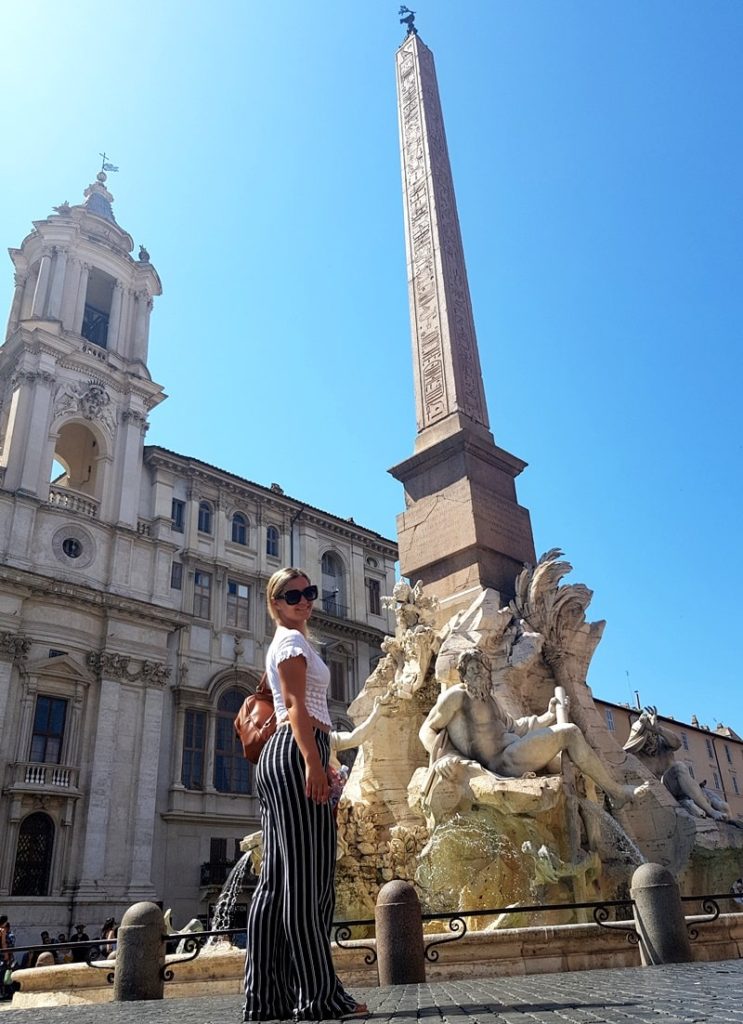
🛑 Stop 6: Castel Sant’Angelo
It’s just a 10-minute walk from Piazza Navona to Castel Sant’Angelo (Castle of the Holy Angel), a towering fortress built on the right bank of the Tiber River in the 2nd century AD as the mausoleum of Emperor Hadrian and his family.
Over the centuries, it transformed from a mausoleum into a Papal fortress, residence, and even a prison.
Today, it’s one of Rome’s most visited museums, standing only a short walk from St. Peter’s Basilica.
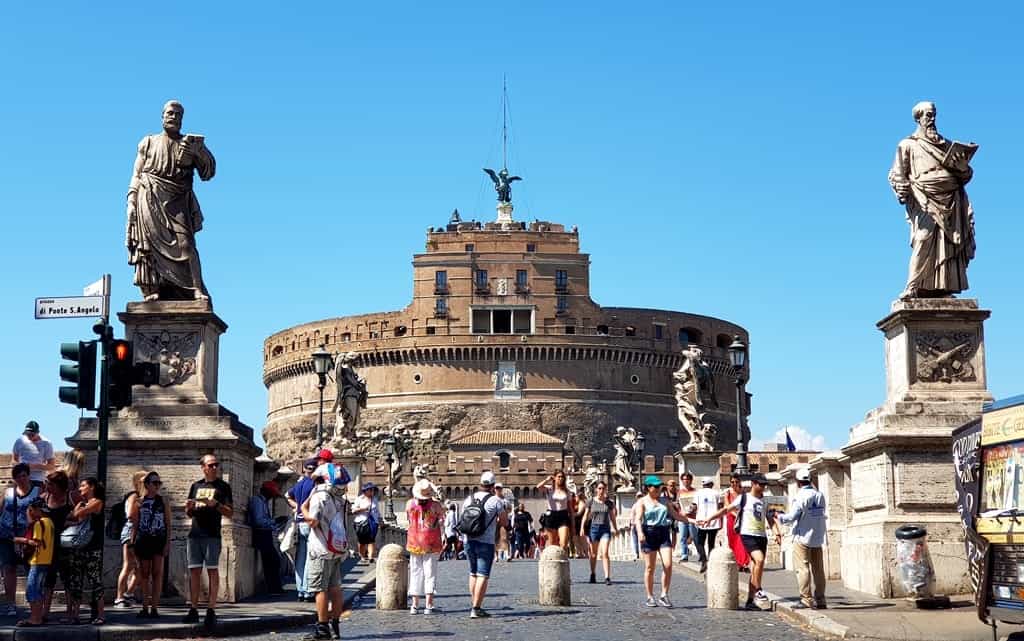
I’ve always loved Castel Sant’Angelo (especially as a big fan of Dan Brown’s novels), so I took my time to admire the fortress and capture some amazing photos.
Hopefully, next time the coin I tossed into the Trevi Fountain will bring me back to Rome, with enough time to finally explore the inside. 🙂
🛑 Stop 7: St. Peter’s Basilica & St. Peter’s Square
A 10-minute walk from Castel Sant’Angelo brings you to the Vatican, where St. Peter’s Square opens up with its grand colonnades and central obelisk.
Designed by Gian Lorenzo Bernini in the 17th century, the square was built to impress pilgrims arriving from all over the world. Standing there, you feel the scale and symbolism of the Catholic Church.
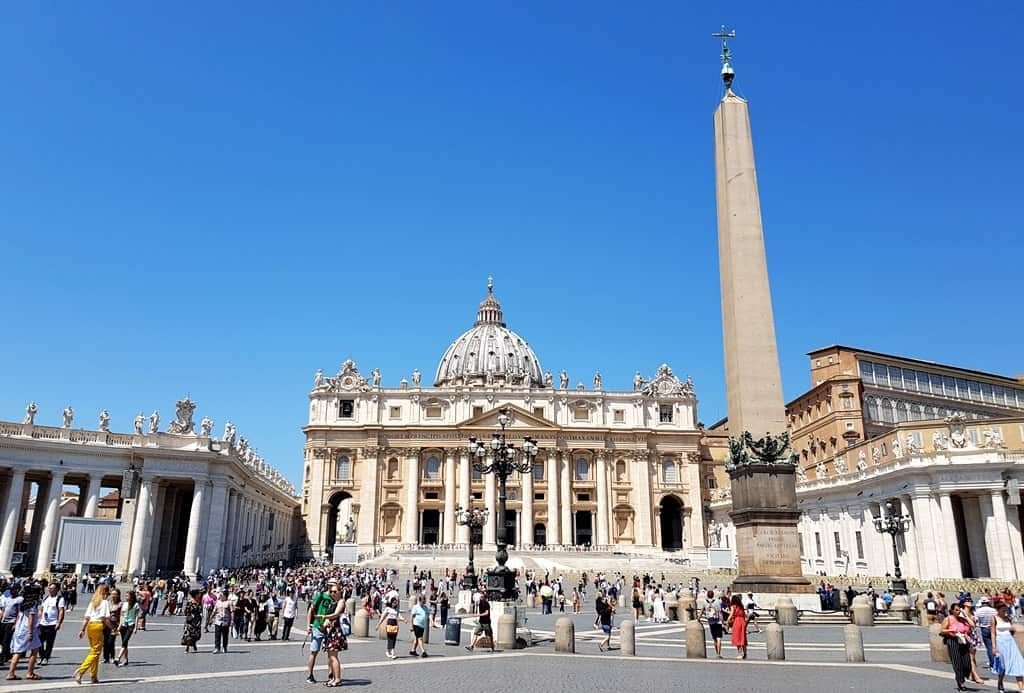
At its heart lies St. Peter’s Basilica, the largest church in the world and one of Christianity’s holiest sites.
Built between 1506 and 1626 over the tomb of Saint Peter, it reflects the genius of Bramante, Michelangelo, Bernini, and Maderno.
Inside, you’ll find masterpieces like Michelangelo’s Pietà and Bernini’s bronze Baldachin, while a climb to the dome rewards you with one of the most breathtaking panoramic views of Rome.
👉 Explore St. Peter’s Basilica on a guided tour and learn about its fascinating history.
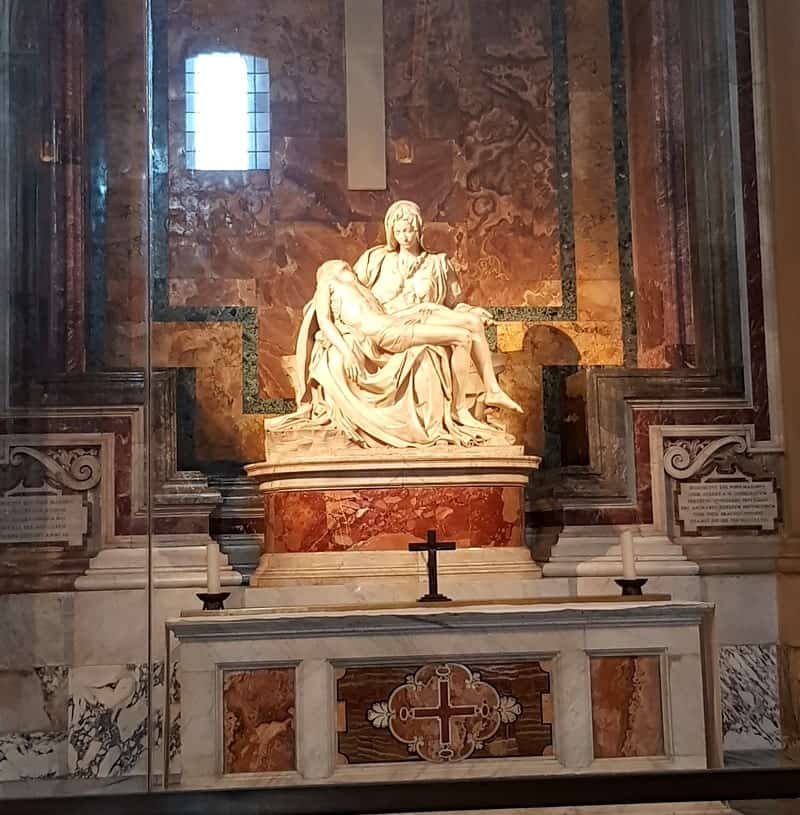
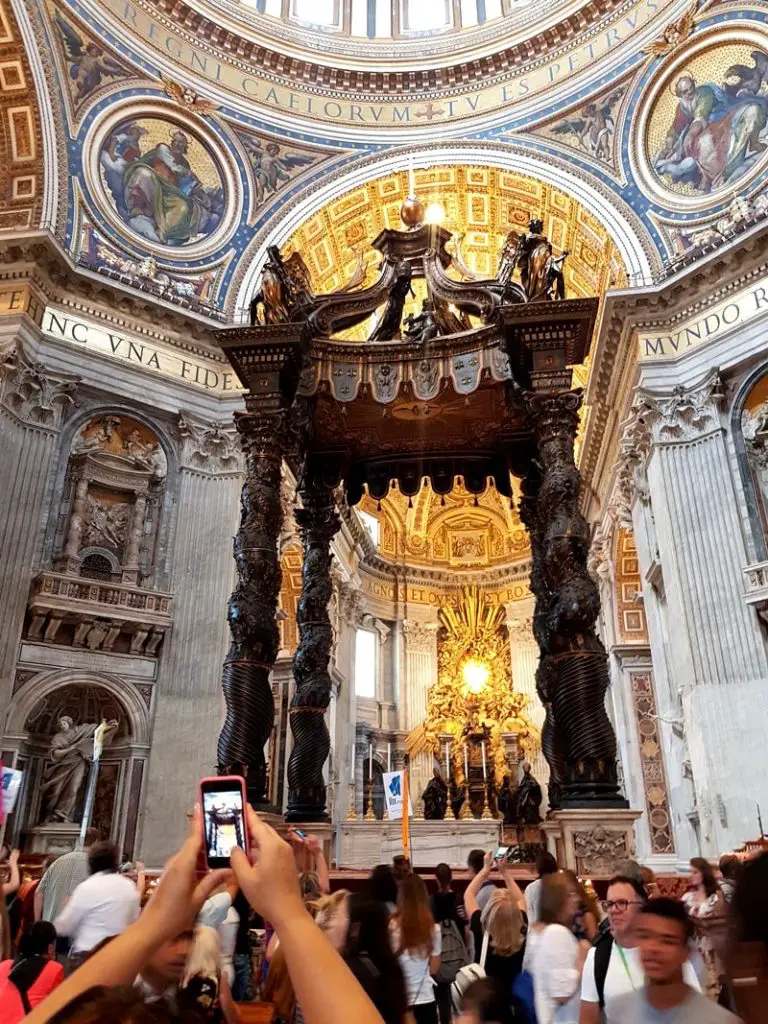
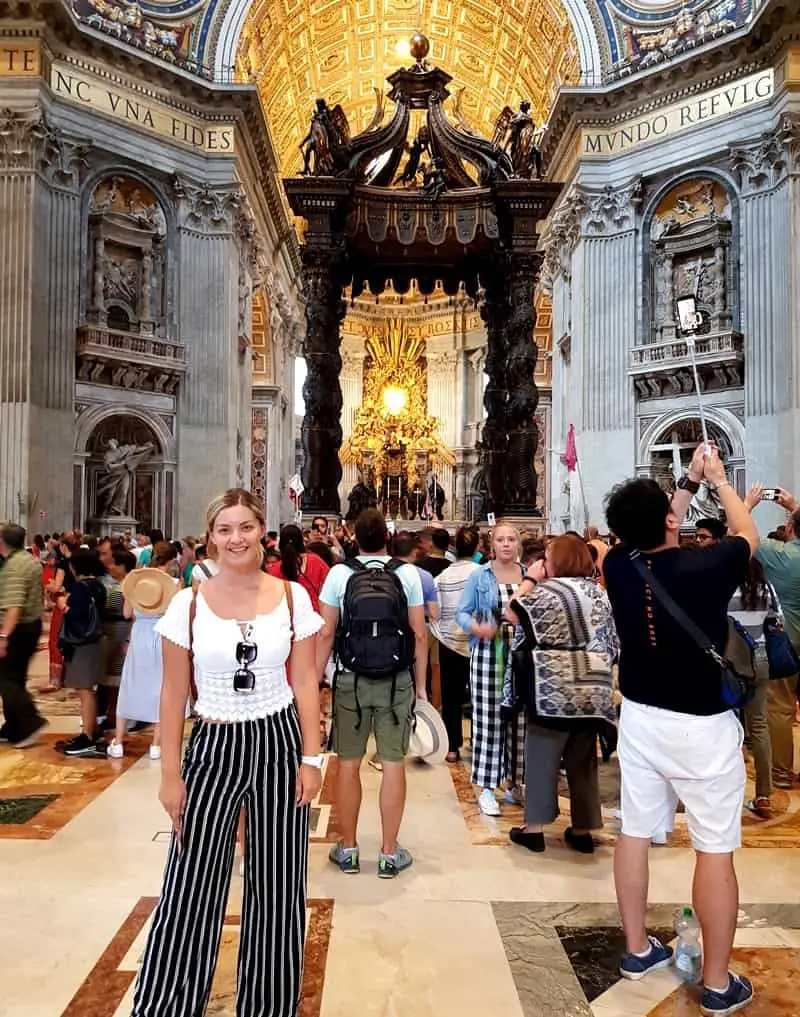
Returning to Civitavecchia Cruise Port
After exploring St. Peter’s Basilica and the square, I made my way back to the port. From the basilica, it’s about a 1 km (a 15-minute walk) to Stazione San Pietro, a small but convenient train station.
From there, I caught a regional train directly back to Civitavecchia, which took just over an hour. It was the perfect way to wrap up my one-day adventure in Rome before rejoining the ship.
Final Tips for Visiting Rome from Civitavecchia
To sum up, my day in Rome was intense but unforgettable!
I managed to see everything I planned thanks to good organization and time management.
From experience, I can confirm it’s possible to explore Rome’s highlights in just 4–5 hours, but only if you’re ready to walk several kilometers and manage your time well.
Here are a few tips to make the most of your short visit:
- Start early — the earlier you leave Civitavecchia, the more time you’ll have in Rome.
- Book skip-the-line tickets in advance for places like the Colosseum (if you have more time and plan to include them).
- Wear comfortable shoes — expect a lot of walking on cobblestone streets.
- Bring water and snacks to save time instead of stopping for long breaks.
- Know your return train options so you don’t risk missing your ship.
The map below shows the walking portion of my Rome itinerary:
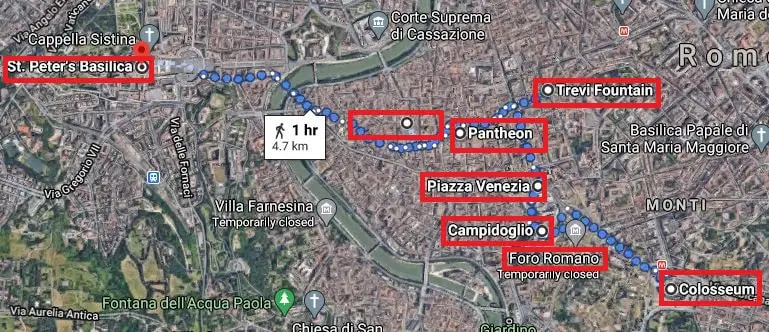
I hope you found this itinerary helpful — thanks for following along!
Frequently Asked Questions About Visiting Rome from Civitavecchia
❓ How far is Civitavecchia from Rome?
Civitavecchia is about 80 km (50 miles) from Rome. By train, it takes roughly 1–1.5 hours each way.
❓ What is the cheapest way to get from Civitavecchia to Rome?
The regional train operated by Trenitalia is the most budget-friendly option, with tickets costing around €5 one-way.
❓ Is it possible to see Rome in one day from a cruise?
Yes, but only if you plan well and start early. With 8–10 hours in port, you can see Rome’s top highlights, though it will be a fast-paced day.
❓ Do I need tickets in advance for the Colosseum or Vatican?
If you want to go inside, definitely book tickets online ahead of time, as lines can be very long and entry times sell out quickly.
❓ Is St. Peter’s Basilica free to enter?
Yes, entry is free, but you’ll need to go through airport-style security, and lines can get long. Climbing the dome has a separate fee.
❓ What’s the best way to avoid missing the ship?
Always leave Rome at least 2–3 hours before your ship’s all-aboard time. Trains can be delayed, so plan a buffer.
❓ Can I do Rome on my own, or should I take a tour?
Both are possible. Doing it on your own is cheaper and flexible, but organized tours provide peace of mind since they’re tailored to cruise schedules. I personally managed to see the highlights of Rome in just 4 hours on foot at a fast pace, but this won’t suit everyone; it really depends on your energy and comfort level.
👉 If you’d like more practical tips for starting your Rome adventure, check out my detailed guide to the Civitavecchia Cruise Port (Rome), with everything you need to know about the port, things to do, and shore excursions.
👉 And if you are staying in Rome for a few days, you can check out the top-rated hotels in Civitavecchia and Rome (for cruisers)
You may also like our cruise port guides to the Mediterranean, Caribbean, Northern Europe, USA & Canada, Middle East, Australia & New Zealand
This post may contain affiliate links, which means I could earn a small commission at no extra cost to you. For more details, please see my disclaimer.


